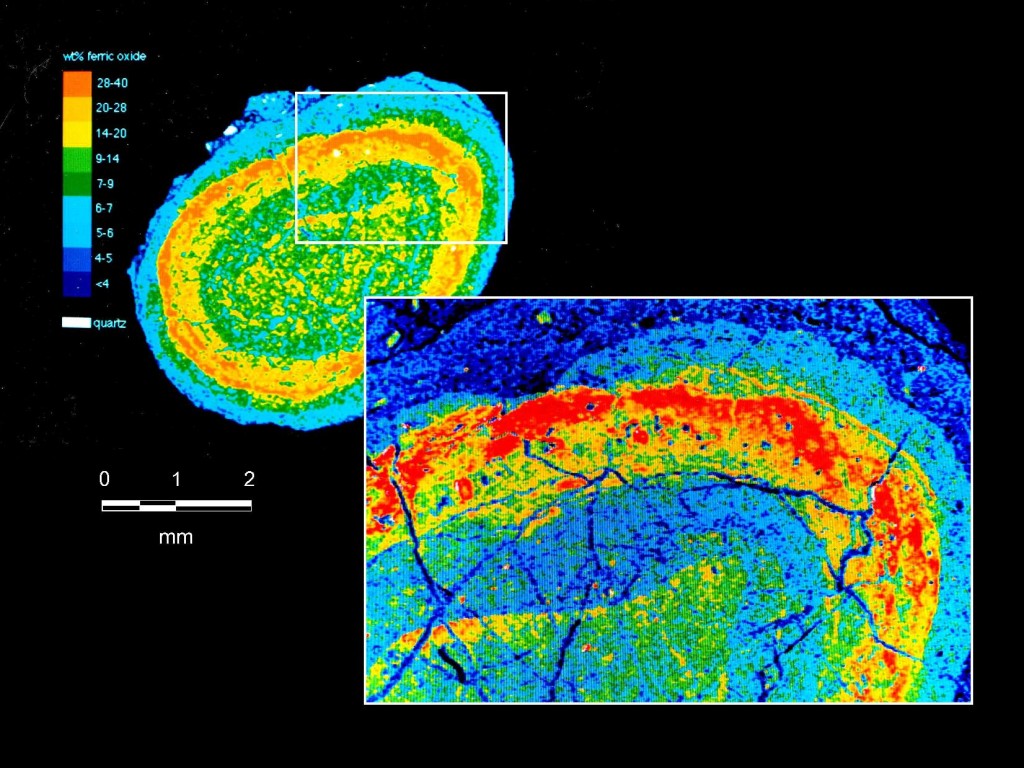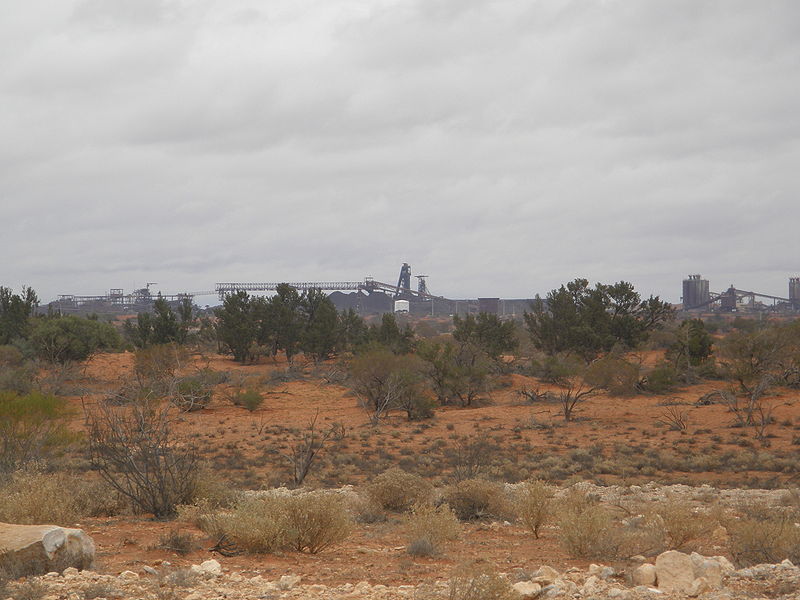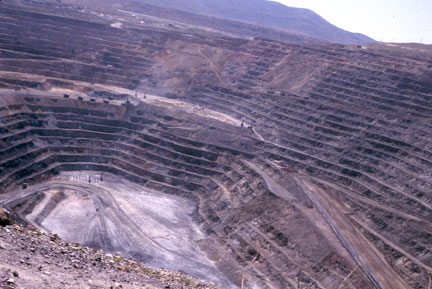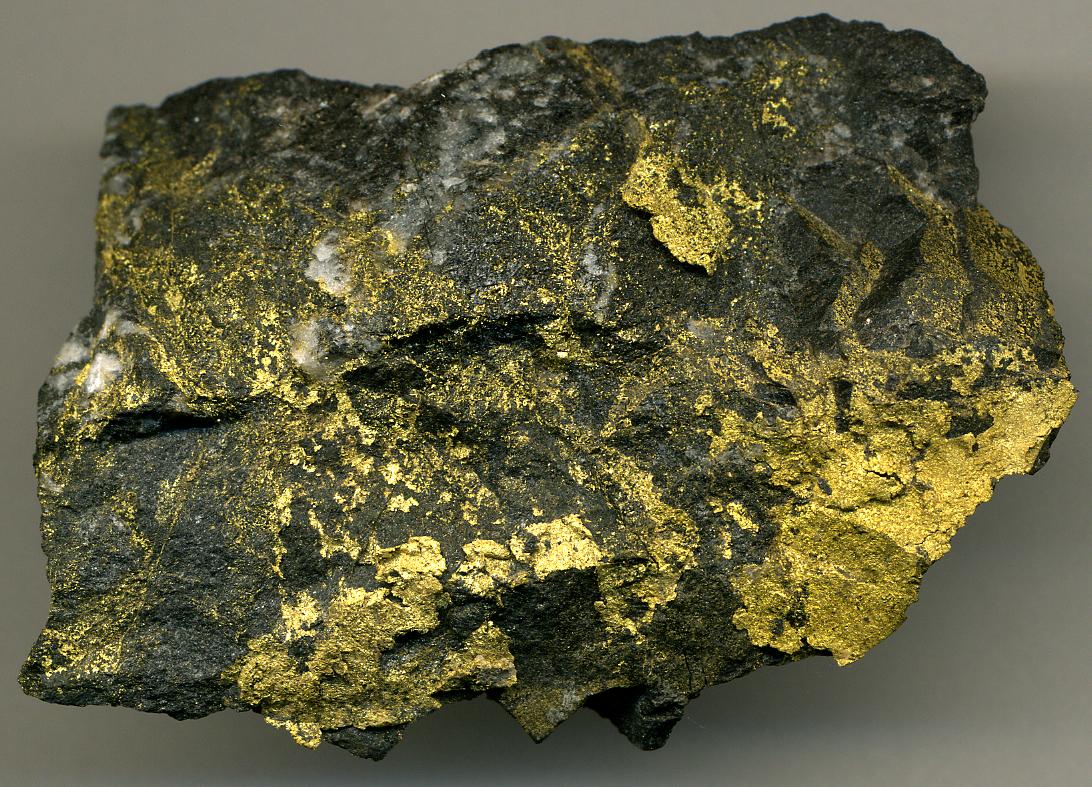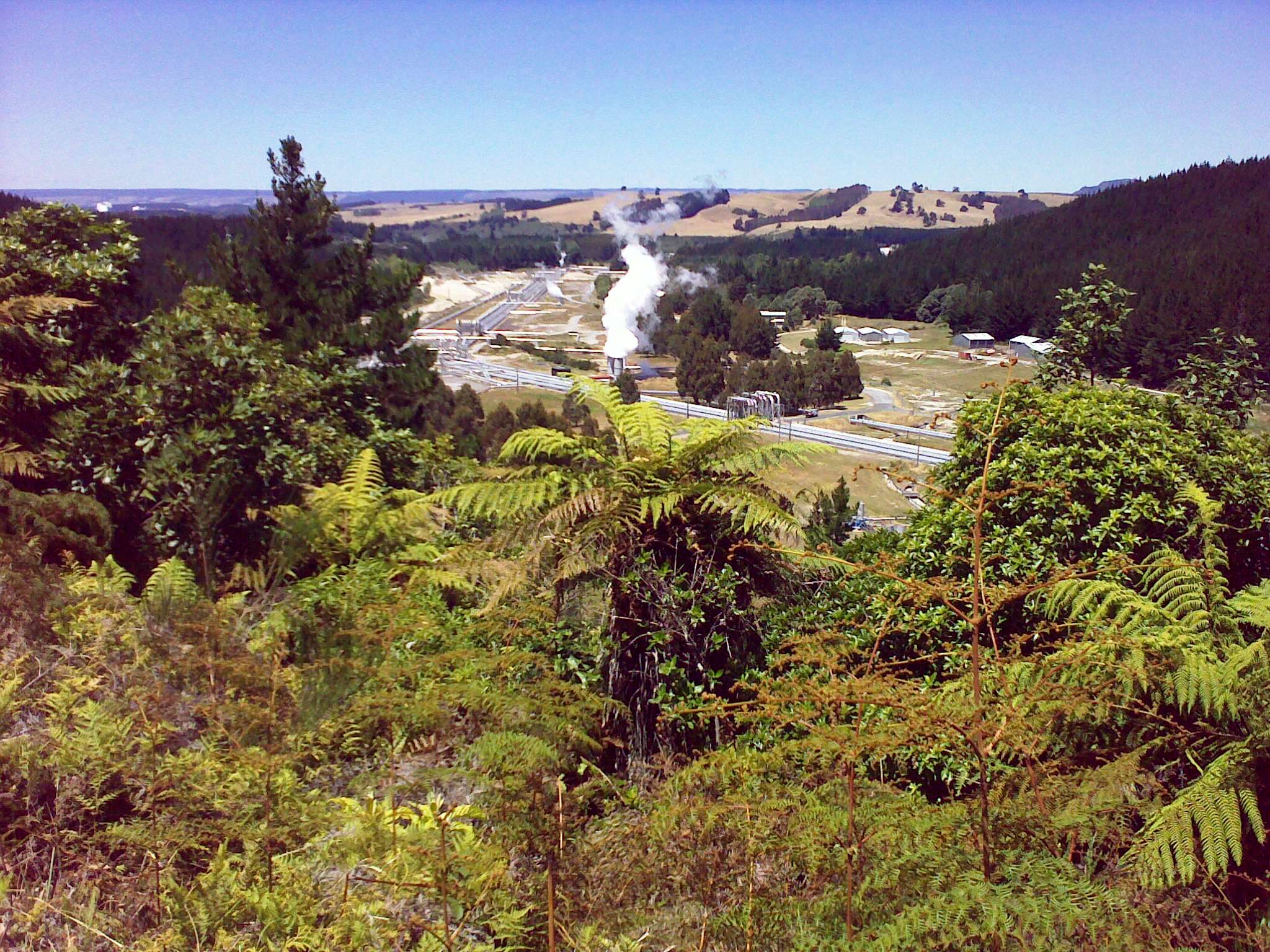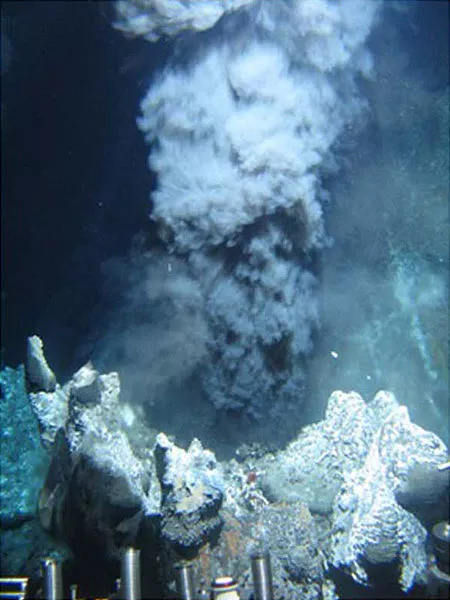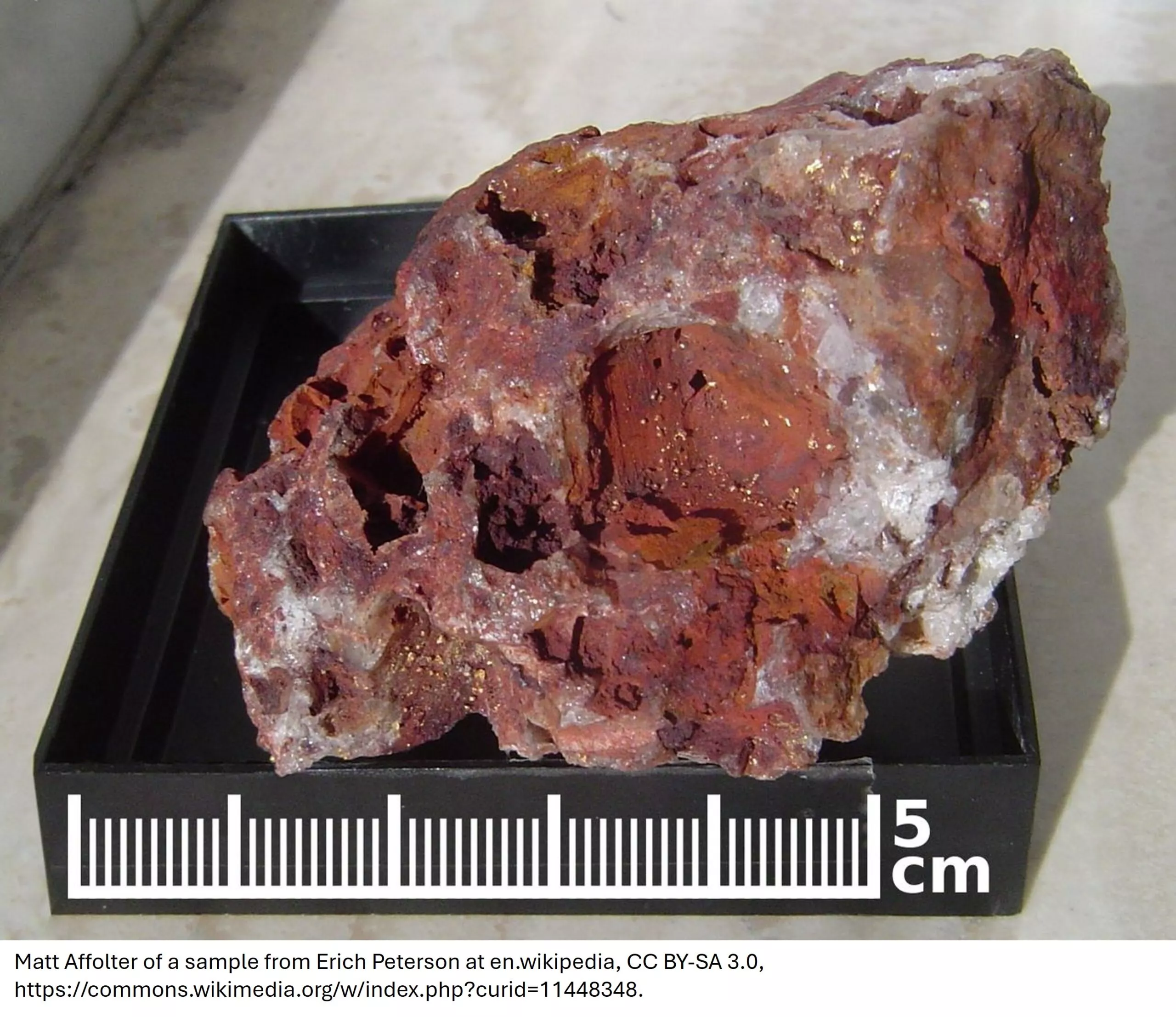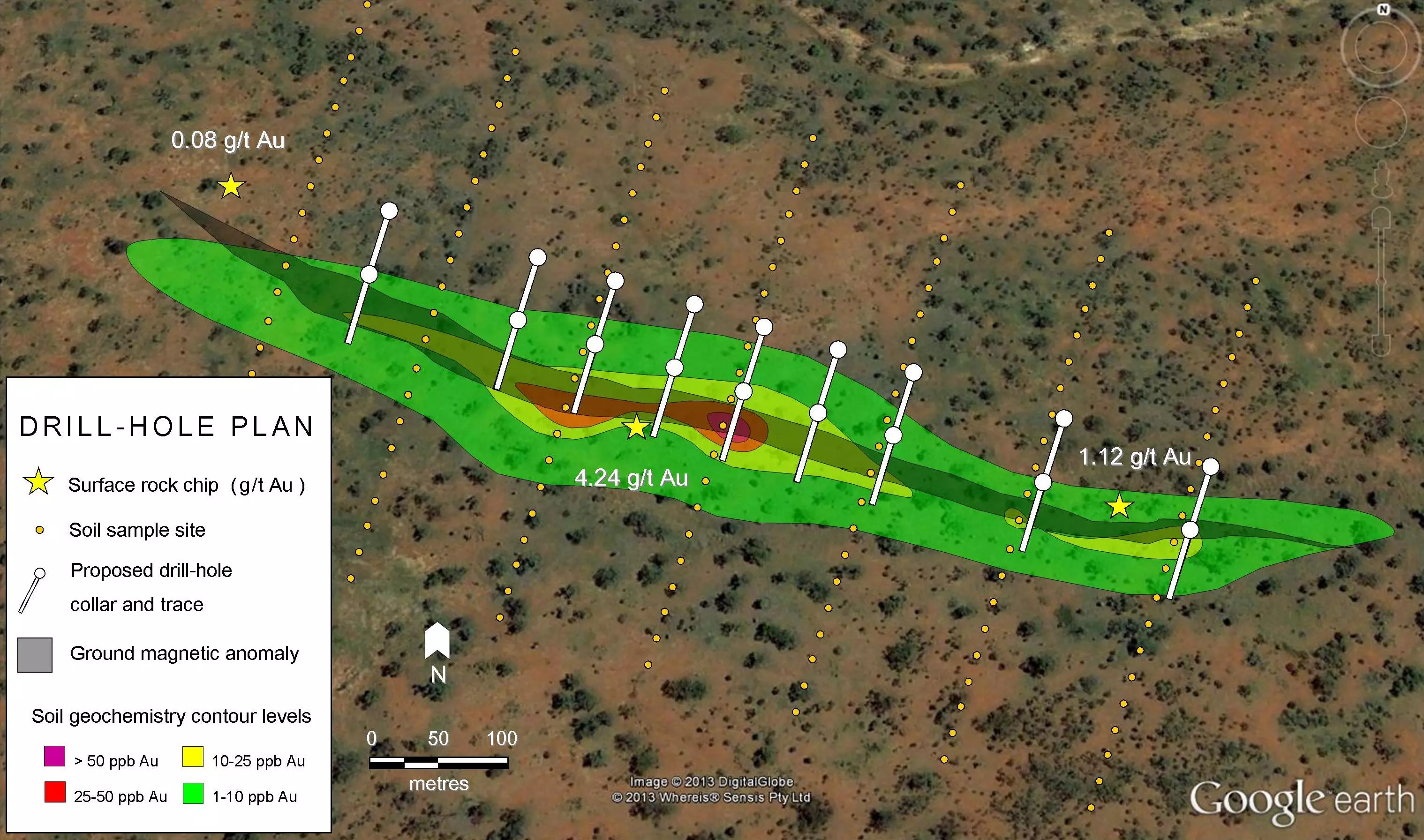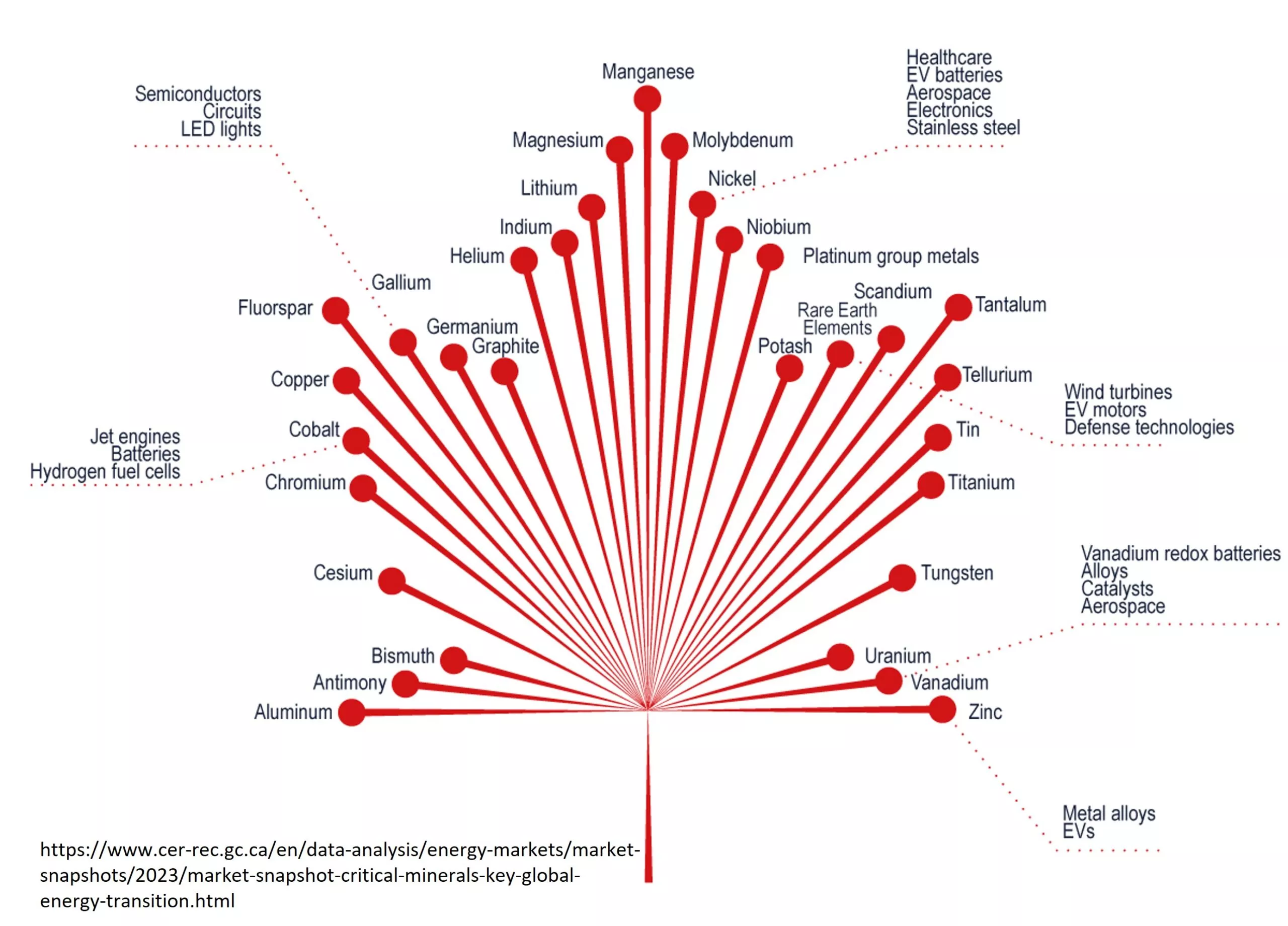Introduction
The gold fields of the Witwatersrand Basin in South Africa are, by a landslide, the largest single gold producing district in the world. It has produced some 2 billion ounces over a century of mining and at an average grade of 15 g/t Au with a current head grade of 6-10 g/t Au and they still have estimated reserves of some 1,161 billion ounces (36,000 tonnes). Production does not come easy though. Shafts go down some 3,900 meters below the surface, where temperatures reach 60° Celcius (140° F) and deadly rockfalls are common. Still, they support many of the largest gold companies in the world including Harmony, Sibanye, Goldfields, and AngloGold-Ashanti.
Formation and Mineralization
Layers of sedimentary rock in the Witwatersrand show that is was once a shallow sea. This sea was formed approximately 3 billion years ago after the collision between the Zimbabwe and Kaapvaal cratons. Ancient river systems feeding into the basin eroded the surrounding highlands and over a period of about 260 million years, deposited layers of quartz pebble conglomerates, sandstones and shales. The conglomerates are rich in pyrite (iron sulfide) pebbles and uraninite (uranium oxide) pointing to an anoxic atmosphere. Basin infilling resulted in more than 11 kilometers of sedimentary rocks and some volcanic rocks. The basin was then overlain by the “Ventersdorp and Transvaal supergroups” (see map below) which buried the gold-bearing sequence under 23 kilometres of sediments and volcanic rocks. Finally, the area was preserved when a massive meteorite hit and formed the Vredefort dome. This pushed up a core area but pulled the surrounding crust down and protected the basin from erosion.
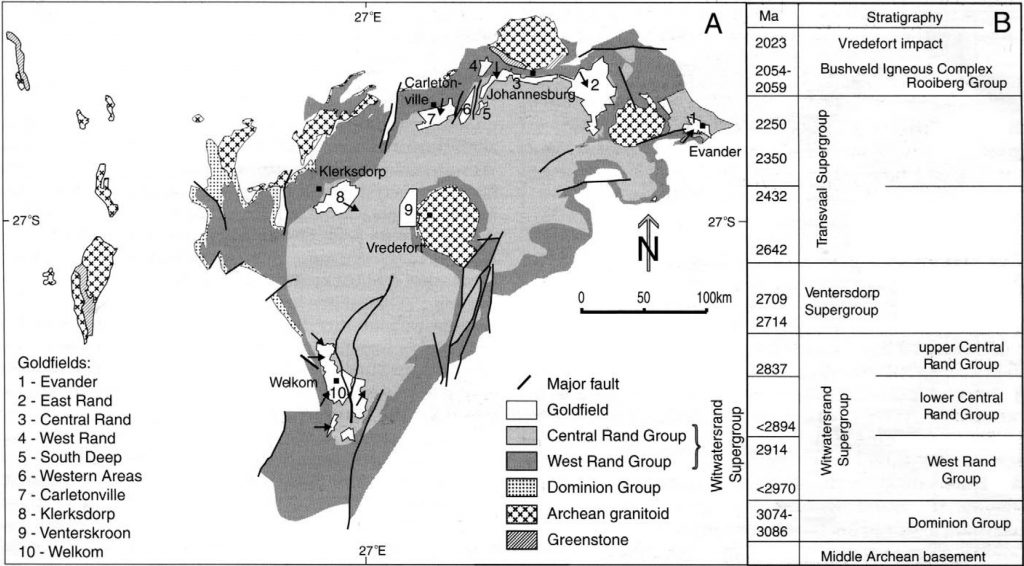
Extensive debate still exists on the source of gold mineralization. Popular theories include hydrothermal, placer and biological precipitation theories. The placer model proposes the gold deposited by an ancient river systems that eroded it from surrounding greenstone belts. Evidence for this comes from the facts that the gold is older than the host rock, the gold is found almost exclusively in the conglomerates and some gold shows a flattened, circular appearance, indicative of water transport. The hydrothermal model proposes that gold entered the basin via the permeable conglomerate horizons via hydrothermal activity and was precipitated out, around the pyrite and uranium. Evidence for this is the dendritic appearance of some of the gold nuggets, and lack of gold in the proposed source rock preserved in the placer deposits.

A final hypothesis is of bio-chemical precipitation. In this hypothesis, gold was “caught” and precipitated out in microbial mats as it was transported by the rivers. The evidence for this is the presence of extremely rich gold grades associated with carbonaceous horizons, the varying richness of the conglomerate beds and the complex suite of elements co-deposited with the gold. As of yet there is no consensus, but further research will yield new insights into this fascinating phenomena.
Mining Techniques
As mentioned, the deposits are can be very, very deep. Many deposits are either deeply buried or have been mined to the point that only the deeper deposits remain. The actual gold deposits themselves are quite thin and the surrounding rock matrix is very hard. Techniques such as cyanidization, or the removal and concentration of gold with cyanide was developed in response to the difficulties encountered by 19th century miners in the Witwatersrand. One side effect of early and very long term mining are the huge tailing piles from the old mines. These are currently being re-processed to extract the remaining gold.
Global Analogues
Similar Witwatersrand type deposits have been found such as the Tarkwa Gold Fields in Ghana, Africa and the Jacobina Gold Deposit in Brazil. However neither have come close to the size of the Witwatersrand. Although a rare exploration target, junior exploration companies Novo Resources and Inventus Mining have paleoplacers related projects. Novo Resources is working on paleoplacer projects in the Pilbara region of Western Australia, while Inventus has a project in the Huronian Basin near Sudbury, Canada.
Further Reading
As the Witswatersrand has accumulated a massive literature of studies going back some 100 years the following are a mere sample.
- Brian F. Windley “The Evolving Continents” 3rd edition 1995. Chapters 19, 21 (Book)
- Kirk et al. in American Scientist “The Origin of Gold in South Africa” Nov 2003 (Link or PDF)
- Laurence J. Robb and F. Michael Meyer “The Witwatersrand Basin, South Africa: Geological framework and mineralization processes” from Ore Geology Reviews June 1995 (PDF)
- Horscroft et al. “Witwatersrand Metallogenesis: The Case For (Modified) Syngenesis” (PDF)
Subscribe for Email Updates

